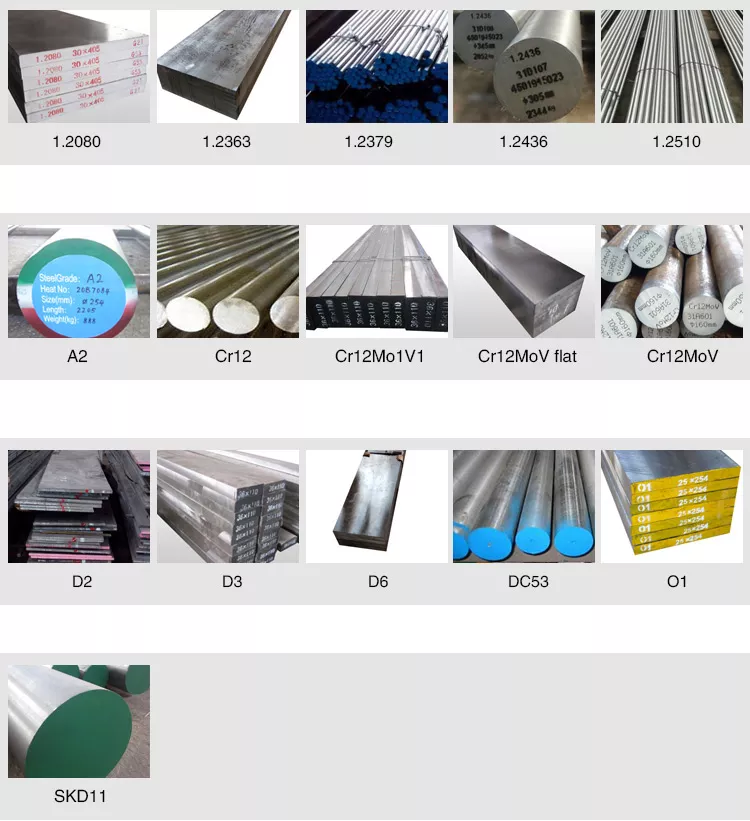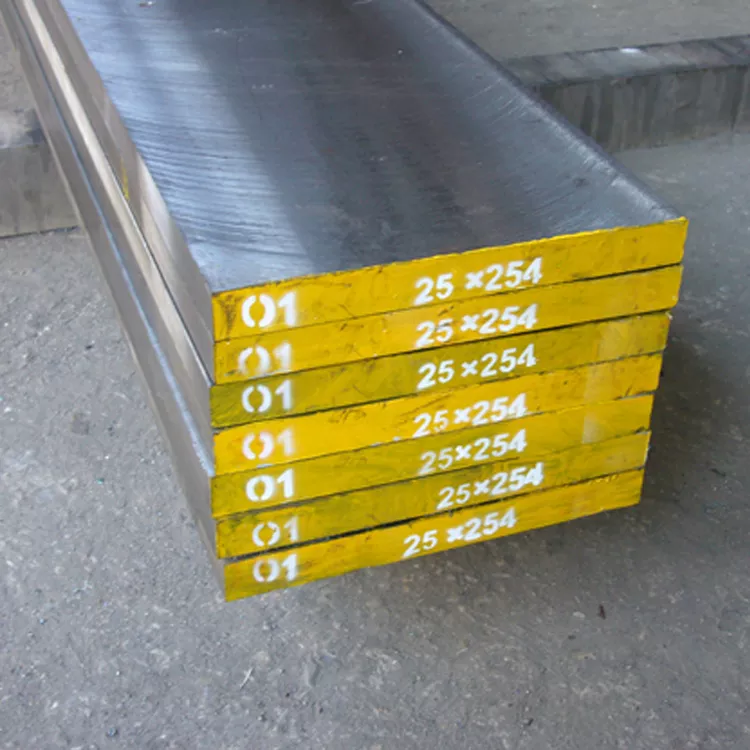O1 Tool Steel - Oil-Hardening Cold-Work Steel (UNS T31501)
Introduction
Contact: bonnie@yilametal.com
finished products show from customer


Cold-work tool steels are high carbon steels that are further classified into three subgroups such as oil-hardening steels, high-carbon, high-chromium steels, and air-hardening steels. Oil-hardening cold-work steels are also known as group O steels consisting of O1, O2, O6, and O7 types.
Type O1 oil-hardening cold-work steel consists of chromium, manganese, and tungsten and is relatively inexpensive. The following datasheet provides details about O1 type.
Chemical Composition
The following table shows the chemical composition of O1 tools steels.
| Element | Content (%) |
| C | 0.85-1.00 |
| Mn | 1.00-1.40 |
| Si | 0.50 |
| Cr | 0.40-0.60 |
| Ni | 0.30 |
| W | 0.40-0.60 |
| V | 0.30 |
| Cu | 0.25 |
| P | 0.03 |
| S | 0.03 |
Physical Properties
The physical properties of O1tool steels are outlined in the following table.
| Properties | Metric | Imperial |
| Density (hardened to 62 HRC) | 7.81 g/cm3 | 0.282 lb/in3 |
| Density (@399°C/ 750°F, hardened to 62 HRC) | 7.70 g/cm3 | 0.278 lb/in3 |
| Density (@191°C/ 375°F, hardened to 62 HRC) | 7.75 g/cm3 | 0.280 lb/in3 |
| Melting point | 1421°C | 2590°F |
Mechanical Properties
The mechanical properties of O1 steels are tabulated below.
| Properties | Metric | Imperial |
| Hardness, Brinell (soft annealed -delivery condition) | 190 | 190 |
| Hardness, Rockwell C (tempering temp 300-1200°F) | 34.0-64.0 | 34.0-64.0 |
| Elastic modulus (hardened to 62 HRC) | 193 GPa | 28000 ksi |
| Elastic modulus (@399°C/750°F, hardened to 62 HRC ) | 172 GPa | 25000 ksi |
| Elastic modulus (@191°C/375°F, hardened to 62 HRC) | 186 GPa | 27000 ksi |
| Compressive yield strength (0.2%, hardened to 50 HRC) | 1350 MPa | 196000 psi |
| Compressive yield strength (0.2%, hardened to 55 HRC) | 1800 MPa | 261000 psi |
| Compressive yield strength (0.2%, hardened to 60 HRC) | 2150 MPa | 312000 psi |
| Compressive yield strength (0.2%, hardened to 62 HRC) | 2200 MPa | 319000 psi |
Thermal Properties
The table below shows the thermal properties of O1 tool steels.
| Properties | Conditions | ||
| T (°C) | Treatment | ||
| Thermal expansion | 10.6 x 10-6/ºC | 20-260 | - |
Other Designations
Looking for equipment to analyze your metals?
Let us source quotes for you for X-Ray Fluorescence Analyzers, Optical Emission Spectrometers, Atomic Absorption Spectrometers or any other analysis instrument you are looking for.
Other designations that are equivalent to AISI O1 tool steels include:
Fabrication and Heat Treatment
Machinability
The machinability of O1 steels is very good with a rating of 90% that of water hardening low alloy steels.
Forming
O1 steels can be easily formed in the annealed condition using conventional methods.
Hardening
O1 steels should be heated uniformly to 780-820°C (1436-1508°F) until completely heated through. If needed, the steels can be preheated at 300-500°C (572-932°F). About 30 min/per 25 mm of ruling section is to be provided and then the steels should be immediately quenched in oil.
Welding
O1 steels are weldable but run the risk of crack formation but this can be avoided with certain specifications.
Heat Treatment
The heat treatment requires O1 steels to be slowly preheated to 649°C (1200°F) and then heated at 788-816°C (1450-1500°F). Then these steels should be held at the same temperature for 10 to 30 minutes and finally oil quenched.
Forging
Forging of O1 steels can be performed at 1038°C (1900°F) down to 857°C (1575°F) but not below 816°C (1550°F).
Cold Work
O1 steels can be easily cold-worked in the annealed condition using conventional methods.
Annealing
Annealing should be performed at 788°C (1450°F) followed by slow furnace cool at a temperature less than 4°C (40°F) per hour.
Tempering
Tempering of O1 steels is performed at 177-260°C (350-500°F) to realize Rockwell C hardness of 62 to 57.
Martempering
Martempering is a substitute hardening procedure which can be used along with suitable salt bath equipment.
Applications
O1 steels are mainly used for short run tooling for cold forming dies, blanking dies, and cutting tools operating at ambient temperature.

